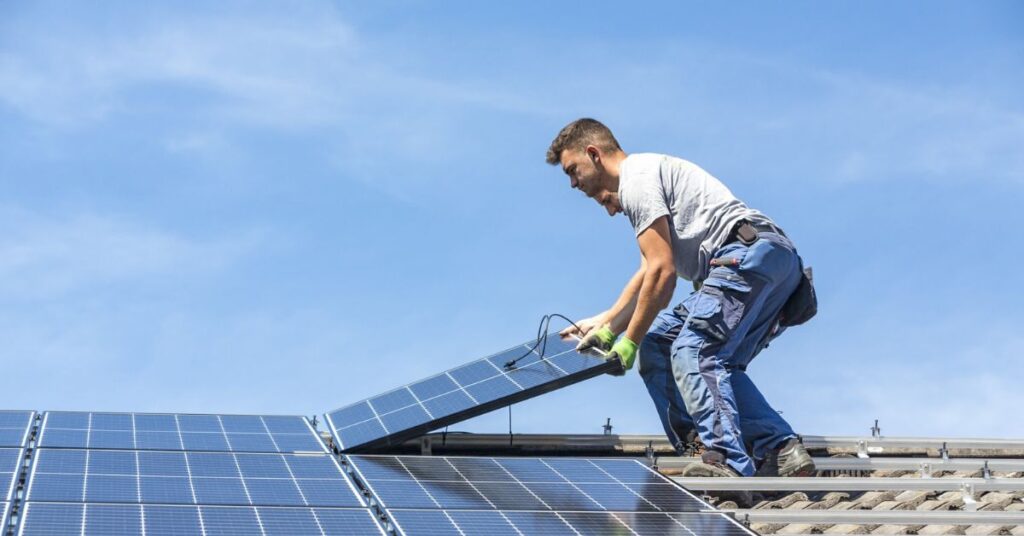As we step into 2024, investing in solar power in NSW has never been more compelling. The solar energy market is evolving, and with system prices on a downward trajectory, there’s an added incentive for homeowners to embrace clean energy solutions.
In this article, we’ll delve into the NSW rebate for solar, focusing on the two primary financial incentives available for eligible households: the Small-scale Technology Certificates (STCs) and the Feed-in Tariff.
What Are Small-Scale Technology Certificates (STCs)?

Small-scale Technology Certificates (STCs) are created when a Renewable Energy System, such as a Solar PV system, is installed. They are used to reduce the upfront purchase price of the system.
The number of STCs depends on the predicted amount of energy generated, and hence the larger the system, the greater the rebate. In essence, one STC is created for every megawatt-hour of production capacity of the system.
How Do STCs Work?
The system for trading and pricing STCs for small systems is managed by the Small-scale Renewable Energy Scheme (SRES).
STCs are bought by Liable Parties (usually electricity retailers) and must be surrendered at the end of each quarter.
As the number of STCs that are required to be surrendered is a fixed amount each year, but the number of STCs created is variable, the price paid for STCs also varies and is determined by supply and demand.
STC Price
The Federal Government legislated in 2010 a fixed price for STCs by implementing a Clearing House system where STCs can be bought and sold for $40.
However, there is no requirement for Liable Parties to purchase from the Clearing House, so they are likely to only do so if there is a shortage of STCs or the market price exceeds $40. There is currently a surplus of STCs in the market, which means the market price of STCs is below $40.
Claiming STCs
There are two ways to claim your STCs: either by assigning them to a registered agent, such as your chosen solar company, who will offer you an upfront discount or a cash payment, or by creating and selling them yourself through the REC Registry or the STC clearing house.
The majority of customers choose to assign their STCs to us as it is a simpler and faster process than trading them independently.
The Feed-In Tariff
The solar feed-in tariff is the amount of money that your electricity retailer pays you for each kilowatt-hour (kWh) of solar electricity that you export to the grid. This is different from the retail price that you pay for the electricity that you consume from the grid, which is usually higher than the feed-in tariff.
Solar Feed-In Tariff Guide 2024
IPART forecasts that the value of solar exports will be 7.7 to 9.4 cents per kWh. For example, if you have a 5kW system and you export all of the power to the grid on a typical Sydney day, you will receive a credit of approximately 20kW/h x 8c = $1.60.
The benefit of a solar system is no longer in the feed-in tariff, but rather in reducing the amount of power you buy from the grid. You want to avoid paying the higher retail price for the electricity that you consume and save more money than what you would get from exporting your solar electricity.
Frequently Asked Questions
What Is The NSW Solar Rebate?
The NSW solar rebate is a financial incentive offered by the government to encourage homeowners to install solar power systems. It includes the Small-scale Technology Certificates (STCs) and the Feed-in Tariff.
How Do I Claim My STCs?
You can claim your STCs by assigning them to a registered agent, such as your chosen solar company, or by creating and selling them yourself through the REC Registry or the STC clearing house.
What Is The Current STC Price?
The current STC price is below $40 due to a surplus of STCs in the market.